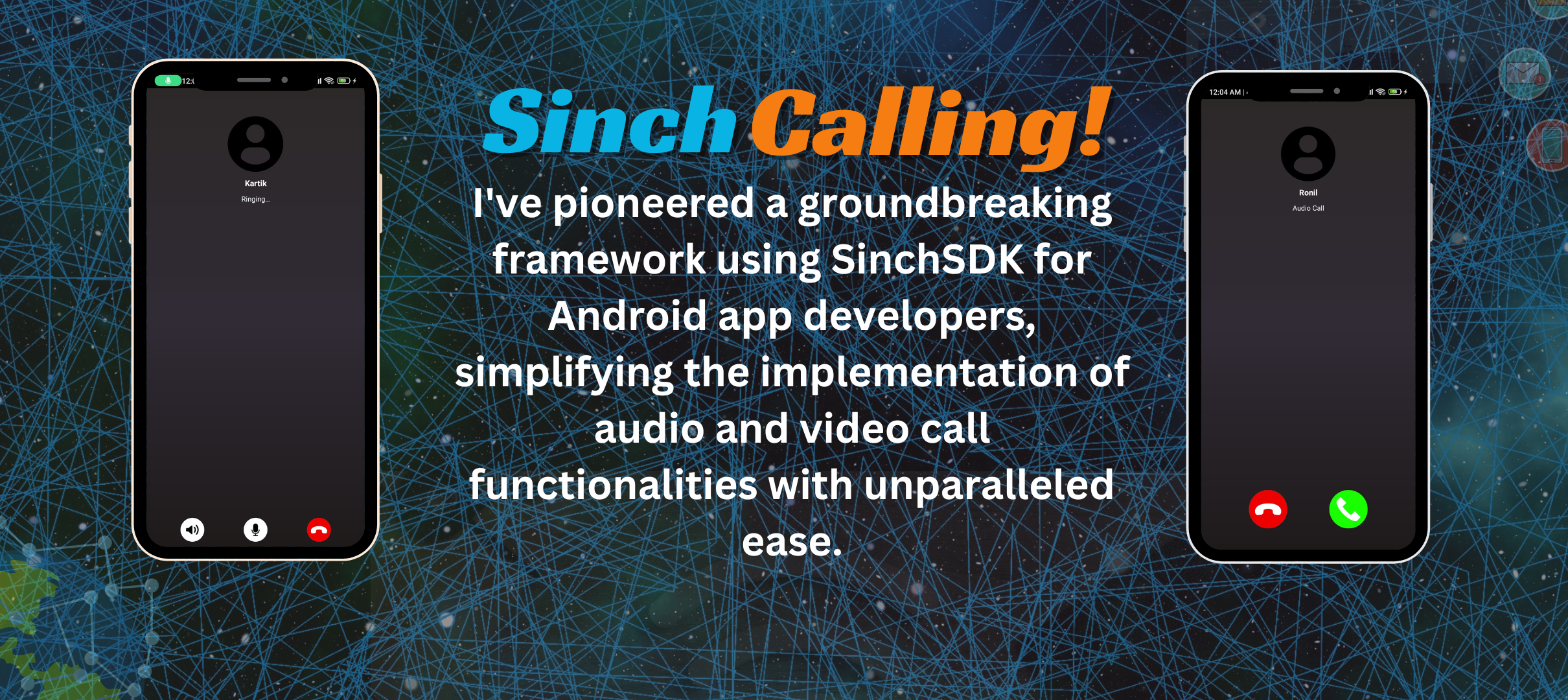

By leveraging the Sinch library, I've streamlined the integration process of calling and video calling functionalities into Android projects, enabling developers to implement these features swiftly and effortlessly. With this solution, the complexities often associated with setting up real-time communication capabilities have been greatly reduced, allowing developers to focus on other aspects of their applications.
The implementation of calling and video calling features using the Sinch library has solved a significant problem in mobile app development, where developers often face challenges in integrating such functionalities seamlessly. By providing a straightforward solution, developers can now easily incorporate calling and video calling into their projects, saving valuable time and effort.
Furthermore, this solution offers flexibility and customization options, allowing developers to tailor the calling and video calling experiences to meet the specific requirements of their applications. Whether it's adjusting the user interface or integrating additional features, developers have the freedom to customize the implementation according to their needs.
Overall, by utilizing the Sinch library, I've successfully addressed the challenges associated with implementing calling and video calling functionalities in Android projects, making the process simple and efficient. This solution empowers developers to create feature-rich applications with real-time communication capabilities, ultimately enhancing the overall value and usability of their projects.
READ_PHONE_STATE: Required for making and receiving calls.
POST_NOTIFICATIONS: Required for handling incoming calls when the app is in the background.
To handle incoming calls, create an FCM messaging class within your Android application:
class FCMService : FirebaseMessagingService() {
private var ronSinch: RonSinch? = null
override fun onMessageReceived(data: RemoteMessage) {
Log.d("onMessageReceived", ": $data")
if (RonSinch.isSinchPayload(data.data)) {
if (ronSinch == null) {
ronSinch = RonSinch(this)
}
ronSinch?.handelCall(data.data)
}
}
override fun onNewToken(p0: String) {
}
}
Instantiate RonSinch and call registerUser with the required user information:
RonSinch(this).placeVoiceCall(
UserCallModel(
targetID, // Target user's ID
receiverName = userName // Receiver's name
),
launcher = launcher, // Optional: For call disconnection info (its an activity launcher)
seconds = 11 // Optional: Call duration
)
To integrate voice and video calling functionality into Android applications using the Sinch SDK, developers should follow these steps:
RonSinch.RonSinch.By following these steps, Android developers can easily integrate voice and video calling functionality into their applications using the Sinch SDK. It's important to note that the provided code snippets are simplified for demonstration purposes and may require adaptation to fit specific project requirements and coding practices. Additionally, developers should ensure to handle error cases and edge conditions appropriately for a robust implementation.
Firstly, before diving into the integration process, developers need to ensure that their application has the necessary permissions. Specifically, they need to request permission for READ_PHONE_STATE and POST_NOTIFICATIONS. These permissions are crucial for the proper functioning of voice and video calling features within the application.
Next, developers must create a Sinch account. Within the Sinch dashboard, developers can create an application and obtain the FCM Sender ID associated with their account. This FCM Sender ID is vital for establishing a connection between the application and Firebase, which is essential for handling incoming calls.
Once the Sinch account is set up and the Firebase connection is established, developers need to create a Firebase Cloud Messaging (FCM) messaging class within their Android application. This class, typically named FCMService, extends FirebaseMessagingService. The FCMService class is responsible for receiving incoming messages, particularly those related to Sinch payloads. Developers can leverage the RonSinch class to check whether the incoming message is a Sinch payload. If so, the RonSinch class facilitates the handling of the call.
Subsequently, developers need to register users on Sinch. This process is simplified with the RonSinch class, which requires specific user information such as the secret key obtained from the Sinch dashboard, a unique user ID, the FCM Sender ID, environment details, Firebase Messaging Token, and other relevant data. Upon successful registration, developers receive a user ID, which they can store locally within the application for future use.
Finally, developers can initiate voice and video calls using the Sinch SDK. With just a few lines of code, developers can place voice and video calls to other registered users. The RonSinch class provides convenient methods such as placeVoiceCall and placeVideoCall, which require the target user's ID and other relevant information. Additionally, developers can specify optional parameters such as call duration and callback listeners to handle call disconnections.
In summary, integrating voice and video calling functionality into Android applications using the Sinch SDK is a straightforward process. By following these steps and utilizing the features provided by the Sinch SDK, developers can enhance their applications with real-time communication capabilities, facilitating seamless and efficient user interactions.